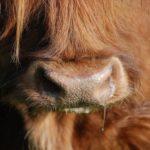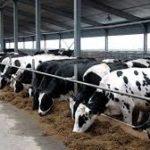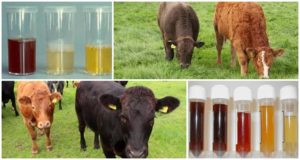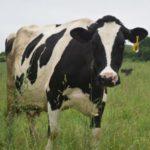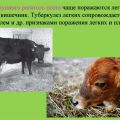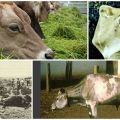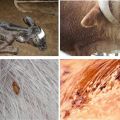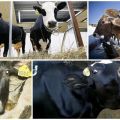Causes, symptoms and treatment of malignant catarrhal fever
Malignant catarrhal fever, or fever, in cattle is a non-contagious sporadic infection. It manifests itself in cows with croupous inflammation of the serous, mucous membranes of the gastrointestinal tract, damage to the respiratory system, lymphadenitis, consistently high fever, and nervous disorders. Agricultural animals of all ages, breeds, wild, domesticated artiodactyls are susceptible to infection.
History of appearance
Malignant catarrhal fever (MCH, malignant catarrhal catarrh) was first described by Anker in 1832. The zoologist called the infection "typhoid fever of cattle." In the Russian Federation, the disease was established in 1873 by I.I.Ravich. The infectious nature of ZKG was identified by Metam in 1923, and described the causative agent of catarrhal fever in his scientific works by Piercey in 1953.
Malignant catarrhal fever is recorded throughout the world, in all regions of our country. The infection manifests itself seasonally, with sporadic outbreaks, local enzootics in individual livestock complexes, farms.
The causes of the disease
Malignant catarrhal catarrh is caused by a lymphotropic filtering DNA virus of the Herpesviridae family. Having penetrated the body, the pathogen is transported with the bloodstream to the brain cells, lymph nodes, parenchymal organs. It affects mucous membranes, serous membranes, tissues.
Important! Under favorable conditions, the ZKG virus remains virulent in the external environment for 32-38 days.
The source of infection are sick individuals, latent virus carriers. The main method of transmission of ZKG is contact, airborne. Causes of malignant catarrhal fever in cattle:
- grazing cattle with other artiodactyls;
- unfavorable conditions of detention;
- keeping young stock with adults;
- unbalanced meager diet;
- feeding with rotten, wet hay, rotten feed;
- low body resistance, reduced immunity;
- hypo-, avitaminosis;
- prolonged hypothermia of the body;
- chronic respiratory infections, diseases of the respiratory system in cows.

Infected pastures, premises contaminated with the causative agent of feed, bedding, equipment are also the main sources of infection of cows with catarrhal fever. Intrauterine (transplacental) infection of fetuses with GCS is possible.
Signs and consequences
In sick cows, ZKG in the early stages is manifested by difficulty in swallowing, shortness of breath, coughing fits, a sharp rise in temperature up to 41.5-42 degrees. Fever, chills are stable. In cattle, appetite worsens, behavior changes.The prodromal period is characterized by nervous disorders (impaired coordination, convulsions, paresis).
Manifestations, symptoms of malignant catarrhal fever in cattle:
- persistently high temperature, fever, chills;
- decreased appetite, refusal to feed;
- nausea, vomiting;
- violation of digestive processes;
- enlargement, soreness of the lymph nodes;
- lacrimation, mucous, purulent discharge from the eyes;
- anemia (pallor) of the mucous membranes, swelling, sticking of the eyelids;
- photophobia, keratitis;
- weak reaction to external stimuli;
- short-term loss of consciousness;
- muscle spasms, cramps, paresis;
- papular vesicular rash on the neck, abdomen, udder, genitals;
- peripheral edema, lymphocytic tissue infiltration;
- rashes, dry crusts on the nasal mirror;
- unstable stools, foul-smelling diarrhea;
- difficulty urinating;
- cough, shortness of breath, bronchitis;
- weight loss.
Important! The incubation period for CGH in cattle lasts from several days to three to five months. The disease is acute, hyper-acute, chronic. Cases of atypical forms of infection are known. High mortality is noted with a hyperacute, acute course of MCH.
In sick lactating cows with malignant catarrhal fever, milk production is completely absent or milk yield decreases. Flakes of fibrin, bloody blotches are noticeable in milk. In infected individuals, breathing is shallow, difficult. On the nasal mirror appear foci of necrosis, white dry crusts, brown scabs.
Animals are very thirsty. Chewing gum stops. In cows, the secretory function of the gastrointestinal tract is disrupted. Profuse bloody diarrhea is replaced by short-term constipation. Feces contain flakes of fibrin, undigested food. The abdomen is enlarged due to increased gas production, disturbance of intestinal peristalsis.
On palpation, pain is noted, an increase in regional lymph nodes. On the mucous membrane of the nasal and oral cavities, foci of inflammation, ulcers, and erosive manifestations are noticeable. If treatment is not started on time, catarrhal fever provokes intestinal atony, severe colic, intestinal spasms, and paralysis of the respiratory system.

Diagnostic measures
When diagnosing malignant catarrh, the epizootological situation in the region is taken into account, anamnesis data, and the results of clinical studies are taken into account. The cow is taken for analysis mucus from the mouth, nasal cavity, outflow from the eyes, feces, urine, blood. The most accurate picture of the situation with this disease in the regions, livestock complexes is obtained by the results of serological tests, pathological data.
Additionally, differential diagnosis is prescribed due to the similarity of the symptoms of catarrhal fever with adeno-, rotavirus infection, rhinitis, purulent conjunctivitis, parainfluenza, listeriosis, rabies, leptospirosis.
Treatment of malignant catarrhal fever
Traditional veterinary medicine resorts to complex therapy when diagnosing cows and buffaloes with ZKG.
In the treatment of catarrhal fever, the following are used:
- complex antibiotics;
- anti-inflammatory, antipyretic;
- cardiac glycosides;
- sulfonamides;
- enveloping the gastrointestinal tract solutions;
- cold compresses;
- autohemotherapy for a protracted form of infection.
To normalize the general condition, the work of internal organs, digestive processes, symptomatic drugs, probiotics are shown.The oral cavity is irrigated with potassium permanganate (diluted in a ratio of 1/1000), after which the affected areas are lubricated with Lugol's solution. The therapy is supplemented with vitamin and mineral supplements, restorative, tonic preparations.
Important! During the treatment of patients with malignant catarrhal fever, cows are isolated from the general herd, kept in darkened, well-ventilated rooms. When feeding, juicy, soft food is used. The acidified water is drunk.
They carry out a thorough disinfection of the premises, adjust the diet, and improve the conditions for keeping agricultural animals.
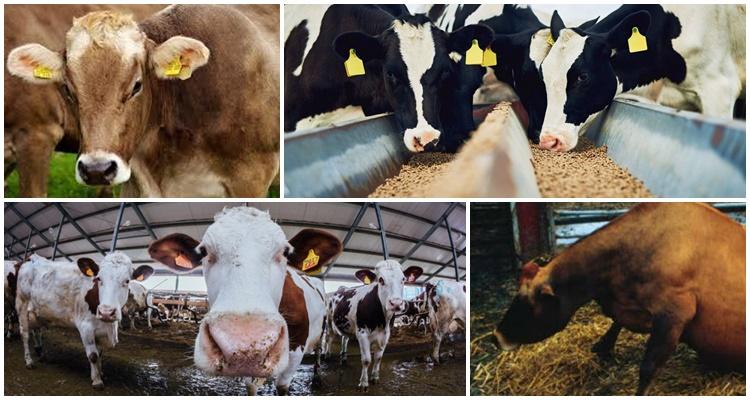
Is there a quarantine?
When diagnosing malignant catarrhal fever, quarantine is introduced in farms. In the event of numerous outbreaks of infection in the complexes, the region is unfavorable. Strict quarantine measures are being introduced to prevent the spread of catarrhal fever in cows.
Important! In some agricultural lands, on farms, complexes, malignant catarrh can manifest itself periodically, with seasonal outbreaks for 4-10 years in a row.
The import, export of livestock for production purposes, breeding, breeding, sale of meat and dairy products from cows until the complete removal of restrictions from regions unfavorable for this infection, livestock, farm complexes, and yards is prohibited. Terminally sick cows are sent for slaughter with subsequent disposal of corpses.
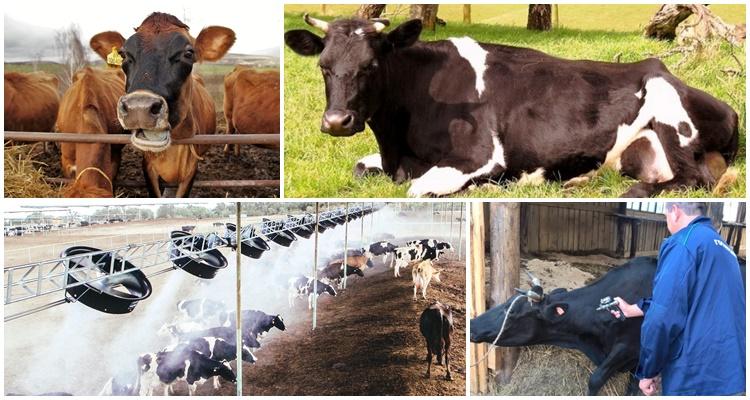
Preventive actions
To prevent outbreaks of catarrhal fever in cows, a number of preventive measures are taken.
Preventive actions:
- separate keeping of young animals from adults, separate grazing of cattle with sheep, goats;
- compliance with sanitary and hygienic standards on farms;
- systematic disinfection of barns;
- a high-quality balanced diet;
- separate keeping of recovered animals from healthy individuals.
In case of suspicion of infection of cattle with catarrhal fever, a daily clinical examination of the entire livestock is carried out.
